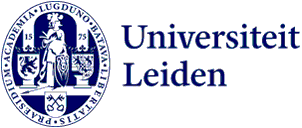
Preserving Syrian excavation data: ‘the documentation here in Leiden is the only thing that’s left’
The Faculty of Archaeology used to be involved in several excavations in Syria, before the outbreak of civil war made travel to the region impossible. One of these excavations is the one of tell Hammam al-Turkman, which started in 1981. Student Ruben Hartman, together with archaeologist Dr Diederik Meijer, once active on the site, are now working on digitising the data. The project was made possible by the NINO Student Research Assistant fund.

Digitising the first box
Ruben Hartman and Diederik Meijer are sitting in C0.10, surrounded by boxes, old excavation reports, and color slides. ‘I’ve just finished digitising the first box, which held files and day reports of 1981 and 1982,’ Hartman notes. ‘The excavation lasted for 9 seasons, so we still got many boxes, file cabinets and slides left to work through. We digitise everything: from the day reports, financial administration to the drawings and burial maps.’
The pile of documentation is enormous. ‘I was contacted by Bleda Düring,’ Ruben states. ‘He asked me to digitise all paperwork, photo negatives, and color slides, as to make the sources accessible for digital consultation.’ Not only will give this more unrestricted access to the information, it will also secure the data for the future. ‘There is a noticeable loss of quality of the paper, the glue is failing, and some of the books have even been degraded by sand and nibbled on by mice.’

Enormous hill site
The Hammam al-Turkman site is a remarkable place. ‘I led the excavation myself,’ Meijer explains. ‘The hill site is enormous. One of the largest of the region, with a diameter of 500 meters. Its inhabitation runs from 5500 to 1300 BC, approximately. The excavation’s main focus was on the mid Bronze Age, when this hilltop housed an important regional centre.’ The final excavation season was in 2001.

Sad reality
The sad reality is that already many of the artefacts found in the site have been lost. ‘All these finds were on display and stored in the depot of the Archaeological Museum in Raqqa,’ Meijer sighs. ‘This museum was plundered by IS. The building was torched, and the finds either destroyed or sold off to private collectors. Unique objects, like a cube of clay that functioned as a Sumerian-Akkadian dictionary. The documentation here in Leiden is the only thing that’s left.’ Even more important to make sure that the excavation data will not be lost in time.
DANS
All the digitised data will be stored in DANS, the Dutch national centre of expertise and repository for research data. Here it will be available for future research.
